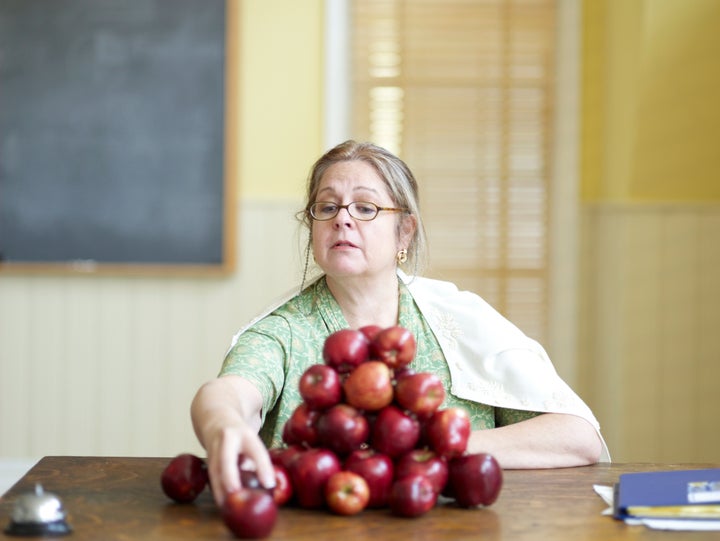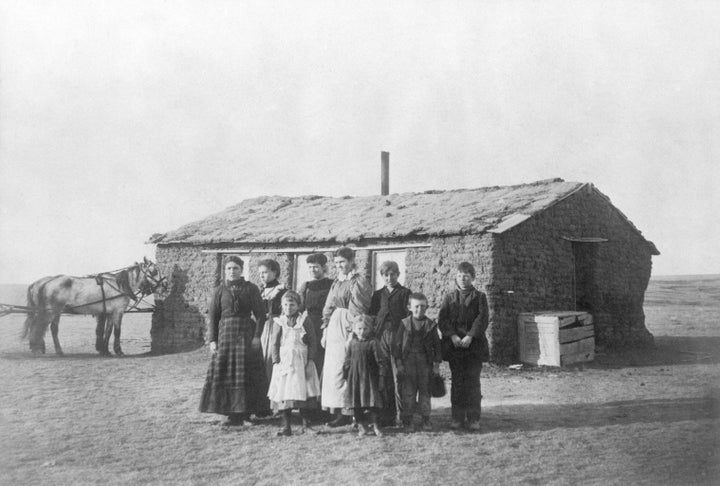
Pop culture is rife with this back-to-school trope: a bright red apple, gleaming on a teacher’s desk. But have you ever wondered how the fruit got its scholarly reputation? It’s not like teachers have an insatiable craving for Red Delicious. (Right...?)
While there isn’t one agreed-upon reason why teachers get apples, there are plenty of theories that revolve around a juicy history filled with hungry educators, the Prohibition era, heavy symbolism, and Robert Downey, Jr. levels of re-branding.
The tradition has humble origins
Except for species like crab apples, modern apples aren’t native to North America. They were first brought to the continent by early European colonists, making their Canadian debut in western Nova Scotia in the 1600s. Canadian Geographic reports they were planted by French settlers and that the province was strongly against the American varieties trickling from across the border.
Why apples? They were easy to grow and kept fresh even in winter.
“Unlike a lot of fruits … you could grow apples and store them for a very long time,” author Michael Pollan told PBS.
WATCH: Here’s the best way to wash apples, according to science. Story continues below.
But the fruits weren’t beloved for their taste. Apples at the time didn’t taste or look like what we’re used to. They were bitter, sour, and smaller than their modern counterparts, used mostly to make cider. Cider was the lifeblood for many colonies, where it was used to trade with in lieu of money. As the Smithsonian notes, cider was considered safer to drink than water at the time. Everyone, even children, would drink cider on a regular basis and it was often used as a bartering good.
The value of the apple and its hardy, cider-making properties made it a worthwhile gift for anyone, particularly the schoolteachers. In frontier towns, being a teacher was a common profession for unmarried women.

The community was expected to house and feed the women who taught their children, and they were often paid low wages. As PBS and the Smithsonian posit, this made apples a very appreciated and practical gift for any educator.
In her apple cookbook, author Karen Hood writes that parents from the U.S. and Scandinavia often gave baskets of apples to teachers to compensate for their low salaries. “When wages increased, the quantity of apples was toned down to a single fruit,” Hood writes.
From bad apples to teacher’s pet
Another theory revolves around the anti-alcohol movement. When the Prohibition era hit, apples and their hard-drinking associations slipped out of favour. Apple orchards were razed, leaving farmers with ashes instead of the fruits of their labour.
In efforts to distance their crop from its seedy reputation, American growers began to market apples as healthy fruits to eat. The red snack was advertised with a slew of health benefits. Slogans like “an apple a day keeps the doctor away” were popularized, and sweeter-tasting apples that would appeal to tastebuds were cultivated.
Another instance of clever advertising: farmers teamed up with the dental industry to sell apples as “nature’s toothbrush.”
The re-branding was a massive success. Rather than colonial homesteading or hard drinking, the fruit’s good name became associated with getting in a teacher’s good graces. This was even immortalized in Bing Crosby’s classic “An Apple For The Teacher.”
There are several other factors that might have gotten apples a starring spot on teachers’ desks everywhere. For one thing, September apple harvests coincide with the start of the school year for many North Americans.
And with their branding free from anti-alcohol advocacy, apples could instead be known for their much older association: throughout history, the fruit has been used as a symbol of knowledge. That makes it a fairly fitting gift for anyone whose job involves teaching.
Alternatives to giving apples
Whatever their true origin is, at the heart of the gift-giving gesture is a sweet meaning: a show of mutual support for the teacher. Whether it was practical, like in the case of frontier educators, or symbolic, as it was for teachers in the last century, giving apples showed appreciation for what an educator does, while keeping in mind what they value.
Nowadays, apples aren’t necessary to making teachers happy. But if you’re still hoping to give them something that shows appreciation of what they do, consider the following:
Disinfecting wipes
Kids are bundles of joy AND germs. This gift will find plenty of use in the classroom (and might even save you a sick day or two).
A Tim Hortons gift card
Could there be a more universally beloved gift?
A letter
You can’t buy this in stores: a hand-written thank you from a child or family will always be priceless.
An Apple ... Macbook
Okay, most can’t afford new computers and software, but many teachers would probably appreciate if you tell them Apple provides a discount for teachers and students year-round.